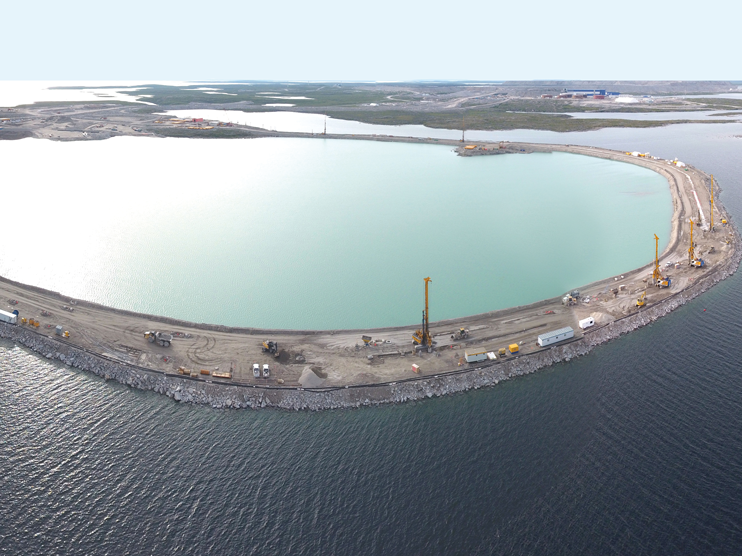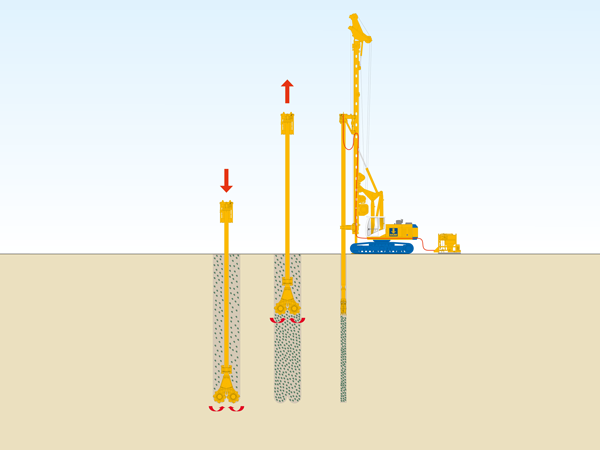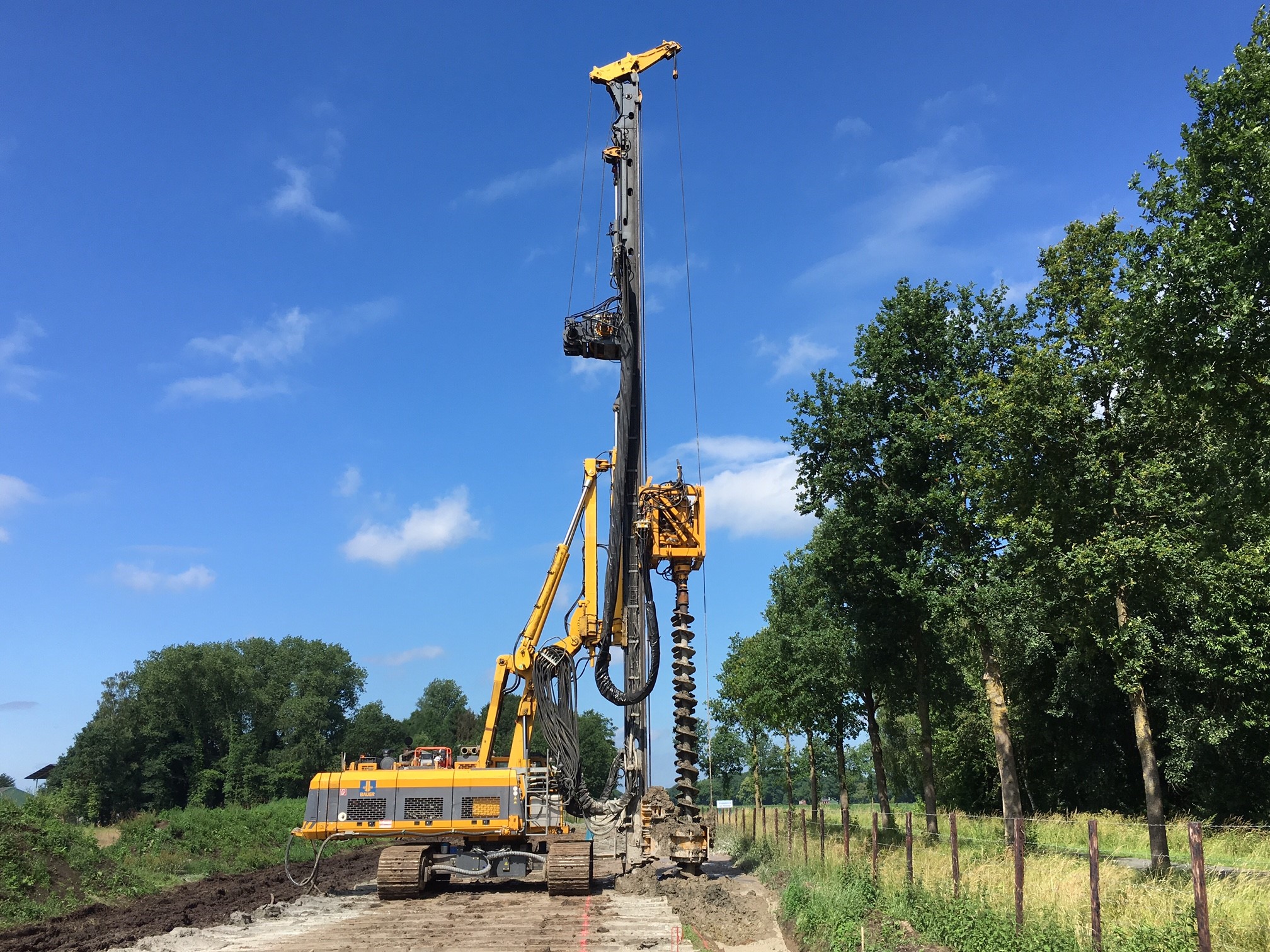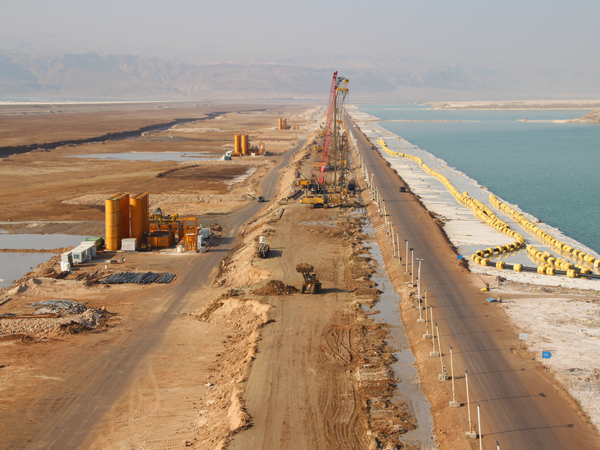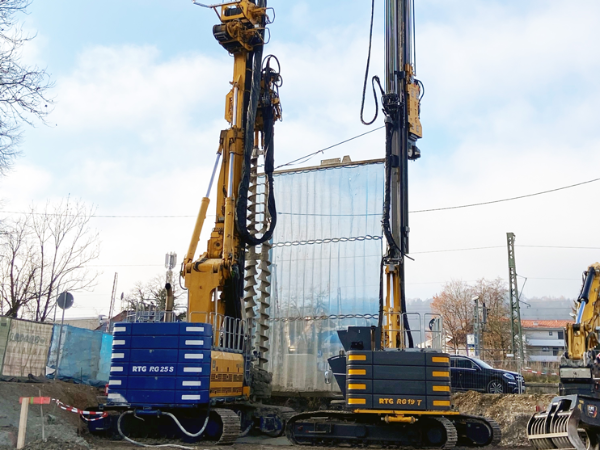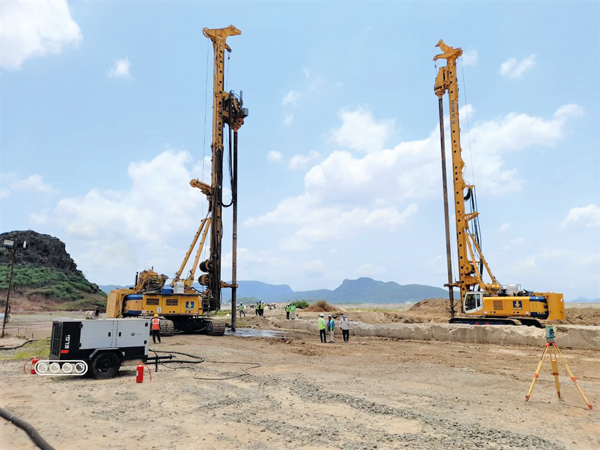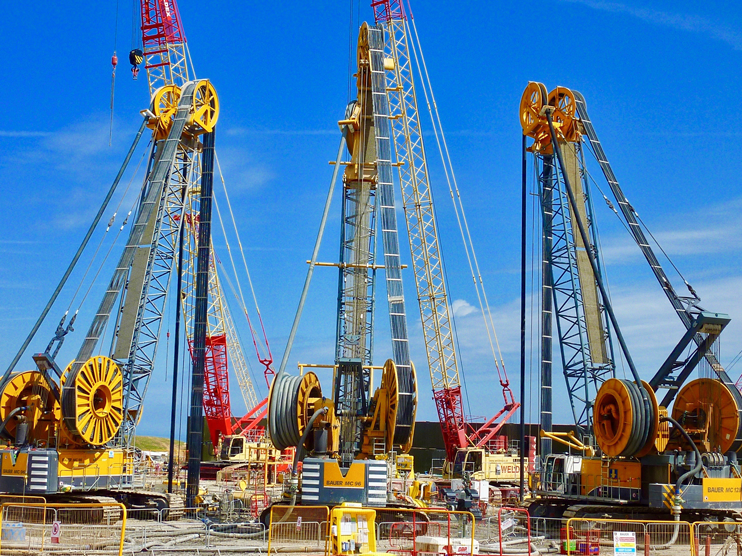Mining Support
With decades of experience in specialist foundation engineering, BAUER offers the mining industry worldwide to support them in project execution and in contributing to planning and design to provide safe solutions for mining tasks.
Experienced in the rehabilitation and reinforcement of dams and dikes using a variety of techniques and methods, or the installation of seepage barriers and foundation improvement, BAUER is the partner for such tasks.
In addition, the BAUER Group has extensive experience with all types of equipment adaptations to perform these techniques in all variations, and a proven history in ground-water management and treatment, if required. Our experience in deep-water drilling operations enables us to operate almost all of our devices remotely, which can be of crucial importance on critical tailings piles and their dams.
Tailing Storage Facilities
With the demand for increased safety for existing tailings dams and the call to de-characterize inactive tailings storage facilities, methods to safely stabilize such dams - permanently or temporarily - are required.
Protection against liquefaction of the coarse and fine soils underlying sections of tailings storage facilities is particularly important for dams constructed using the upstream process. Vibration can cause de-stabilization of such dams, posing a hazard to people working in or living near such facilities.
Soil-mixing processes are particularly suitable for such stabilization because they do not introduce perceptible vibrations into the surrounding soil, and the entire process, including the addition of materials, can be modified so that elements of a specified strength can be installed completely remotely.
To prevent spontaneous failure due to liquefaction in existing upstream tailings dams, one of the three critical conditions (loose soils / presence of water / stimulation by vibration or load change) must be eliminated in a defined manner. Soil improvement measures in the subsurface, such as immobilization by a deep mixing method (DSM) and drainage, can significantly reduce the risk of failure. In addition, installation of a rigid grid of interconnected DSM elements can help stop the flow of liquefied material toward a critical tailings dam.
It is recommended to install a monitoring system that can be used before, during and after the subsurface improvement methods. This would be particularly useful for sensitive structures, to establish the necessary controls required ensuring their safety and integrity. Online-monitoring systems are available. Bauer has the know-how and technologies for such instrumentation and monitoring installation.
Open cast Mining
The diversity of existing competencies enables services in open pit mining, ranging from cut-off walls and horizontal sealing blankets to ground improvement and foundations as well as water well drilling.
Shafts
Due to decades of experience in the production of shafts from round secant bored pile walls or polygonal secant diaphragm walls, these are reliable preliminary services for the various requirements. Whether ventilation shafts or access shafts to be constructed in stable ground by rock excavation or raise-boring, the shafts manufactured by Bauer are the start.
Special applications
Special applications are also developed and executed for specific projects. Bauer's ability to modify and combine standard methods and adapt standard equipment for the specific application makes us the right partner right from the planning stage of such projects.
The Mixed-in-Place method uses rotary drilling or milling methods, which already do not introduce significant vibration into the subsurface through the drilling and mixing process. The existing material is mixed with cement and additives to form a stable element. The objective of soil improvement is to improve the compressive and tensile strength as well as the modulus of elasticity of the soils in and under the tailings facilities and the related dams. Construction work on dikes, dams and in mines has demonstrated the reliability of suitable project-specific mixed-in-place methods for the safe low-vibration stabilization of soils with a high liquefaction risk.
To prevent spontaneous failure due to liquefaction in existing upstream tailings dams, one of the three critical conditions (loose soils / presence of water / stimulation by vibration or load change) must be eliminated in a defined manner.
Soil improvement measures in the subsurface, such as immobilization by a deep mixing method (DSM) and drainage, can significantly reduce the risk of failure. In addition, installation of a rigid grid of interconnected DSM elements can help stop the flow of liquefied material toward a critical tailings dam.
It is recommended to install a monitoring system that can be used before, during and after the subsurface improvement methods. This would be particularly useful for sensitive structures to establish the necessary controls required ensuring their safety and integrity. Bauer has the knowhow and technologies for such monitoring installation.
